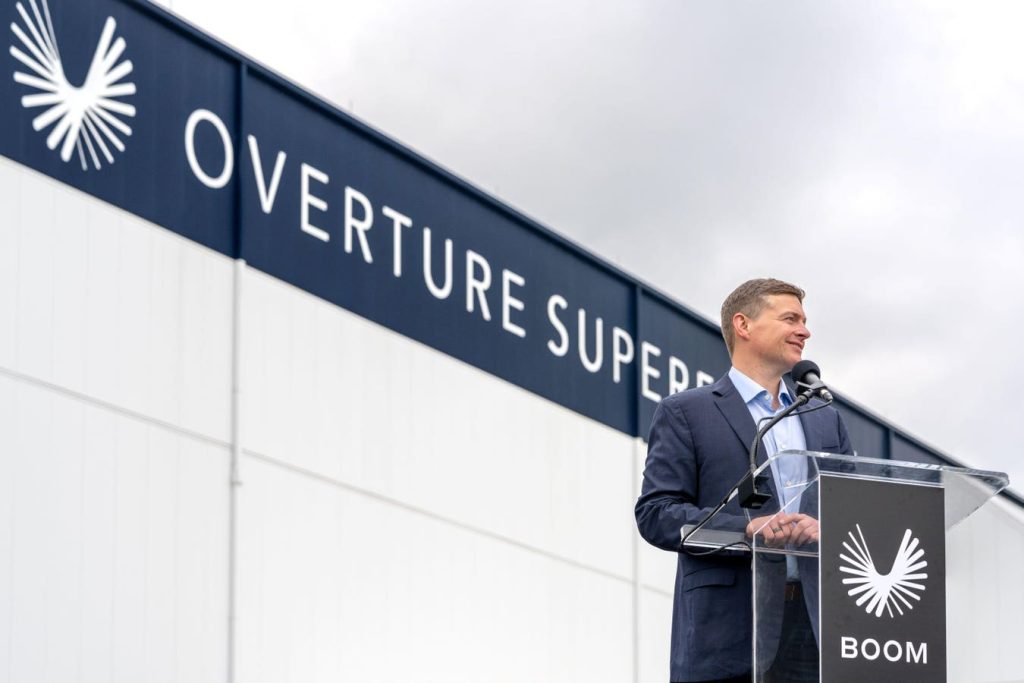Boom Supersonic reached a major milestone by opening its $100 million factory at the Piedmont Triad International Airport in Greensboro, North Carolina, to serve as the manufacturing hub for its supersonic aircraft. The factory, spanning 180,000 square feet, was completed on time and within budget, with plans to produce an airplane every six days, or about 60 per year. The opening ceremony, attended by prominent figures such as North Carolina Governor Roy Cooper and State Senate Leader Phil Berger, highlighted the state’s aviation history and the potential economic impact of the project.
Speakers at the ceremony emphasized North Carolina’s connection to aviation through Kitty Hawk, the birthplace of flight, and expressed confidence in Boom’s ability to revolutionize air travel with supersonic jets. Governor Cooper noted that airlines view Boom’s aircraft as the future of aviation, with incentives for the company being primarily performance-based to ensure job creation and economic growth. State leaders from different political backgrounds, such as Cooper and Berger, united in support of the project, emphasizing North Carolina’s tradition of innovation and manufacturing excellence.
In a bid to attract Boom Supersonic to North Carolina, the state offered a grant of up to $87 million over 20 years based on new tax revenue and company investment, along with additional funds for site and road improvements. The spokesperson for the NC Department of Commerce underlined that the state’s investment in infrastructure would be protected even if Boom fails to fulfill its plans. Despite the challenges posed by established aviation giants like Boeing, Boom’s founder and CEO, Blake Scholl, remained optimistic about the company’s future, citing orders from major airlines like American, United, and Japan Air Lines.
Scholl highlighted the advantages of Boom’s Overture aircraft, which is designed to fly twice as fast as conventional jets, offering cost and time savings for airlines and passengers. With preliminary orders from airlines and meaningful deposits made, Boom aims to secure the necessary certifications from the Federal Aviation Administration to begin production in three to four years. The company’s success hinges on its ability to navigate regulatory hurdles and deliver on its ambitious promises, amid a shifting landscape in the commercial aviation industry.
The opening of the factory signifies a significant step forward for Boom Supersonic, as it positions itself as a viable contender in the aviation market. The bipartisan support from North Carolina’s political leaders underscores the state’s commitment to fostering innovation and economic development. As Boom strives to bring supersonic travel back to the forefront of the industry, the challenges ahead remain daunting, but the company’s resolve and vision may pave the way for a new era in air transportation.
With competition intensifying and market dynamics evolving, Boom Supersonic faces a crucial juncture in its journey towards realizing its vision of commercial supersonic flight. As the company navigates industry skepticism and regulatory hurdles, the successful operation of its new factory in North Carolina serves as a testament to its commitment to innovation and excellence. With key partnerships in place and a strong foundation laid, Boom’s ambitious plans for supersonic air travel may soon become a reality, reshaping the future of aviation and ushering in a new wave of technological advancements.


